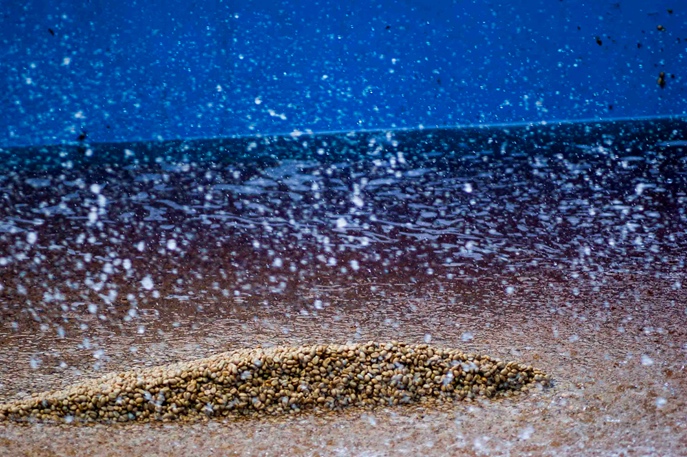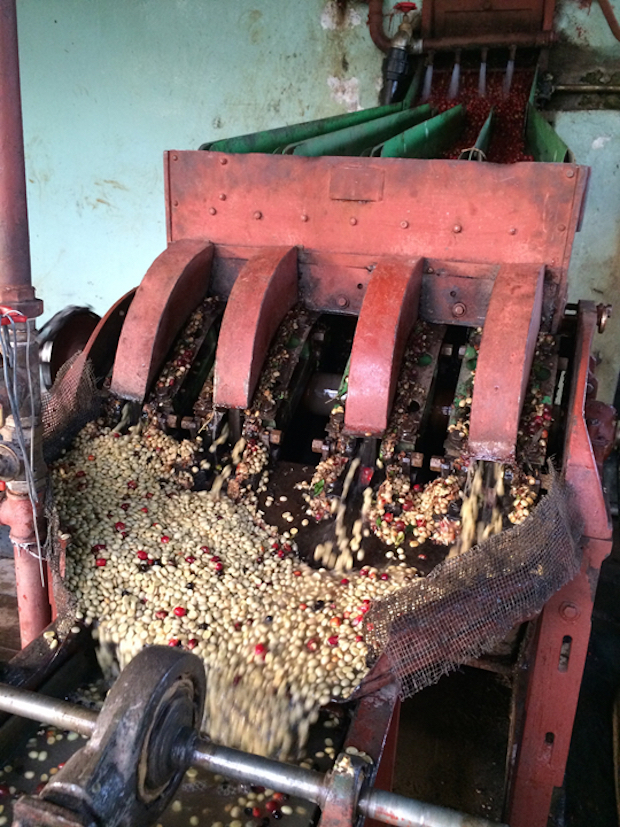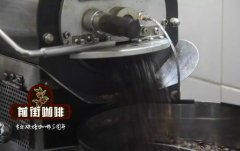The difference between carbon dioxide impregnated Coffee and anaerobic fermentation Coffee
Professional coffee knowledge exchange more coffee bean information please follow the coffee workshop (Wechat official account cafe_style)
Fermentation in food and beverages has a very long history. Since someone tried to taste those stale foods, "fermentation" has opened the door to a new world of food taste innovation.

Basic knowledge of fermentation
The definition of fermentation is more subtle, and different people have different understandings. The word fermentation has a very strict definition for microbiologists and biochemists. Specifically, fermentation means that microorganisms decompose organic molecules and release energy in an oxygen-free environment in the process of metabolism.
Of course, there are no such strict standards and definitions in our diet. Simply put, people in the catering industry use "fermentation" to indicate the use of microorganisms (such as bacteria and yeast) to modify food, which usually produces products such as ethanol (alcohol), carbon dioxide, lactic acid and acetic acid.
Fermentation in coffee
Without going deep into biochemistry, basically all coffee has to undergo a certain degree of fermentation.
Almost all washed coffee beans need to go through a preset fermentation stage. After peeling, the coffee fruit needs to go through the fermentation process, which is usually carried out at low temperature at night, sometimes soaked under water to ferment. It is then cleaned, graded and dried. The soaking process after fermentation often reduces the number of microorganisms, but fermentation continues to occur in this process.

Natural sun and honey-treated coffee beans will also produce fermentation behavior outside the raw beans, because the peel and pulp adhere to the surface of the raw beans, in the drying process, microorganisms will consume the sugar and gradually change the flavor of the raw coffee beans.
How to make use of the function of fermentation is an important work of Ka Nong. As the coffee industry gradually increases its quality requirements and processing standards, many innovative treatments are emerging rapidly, just like the wine and beer industries have experienced.
An orthodox winemaker may shudder at the fermentation of coffee. Because there are few winemakers in the world who are completely unfamiliar with the varieties of yeast they use to make wine. But this is all too common in the coffee industry. In this respect, coffee fermentation is more similar to cocoa beans.
Some people speculate that these endemic microbial species are the reason why coffee has a unique flavor of origin. However, there is no scientific research to provide clear support for this hypothesis. Like other fermented products, the composition and structure of coffee is inextricably related to local climate and varieties, not to mention countless other factors, will play a very important role in renting coffee flavor.
Carbon dioxide impregnation and anaerobic fermentation
Among them, a new treatment method which can produce unusual unique flavor is rapidly becoming popular in the industry, which involves "anaerobic fermentation", but is called "carbon dioxide impregnation".
Let's first sort out the technical terms so that they don't look like a mass of pulp:
Anaerobic-oxygen-free environment
Carbon dioxide-an environment rich in carbon dioxide
Impregnation, a more inclusive term than fermentation, refers to microbial metabolism
Is there a feeling that anaerobic and carbon dioxide are interchangeable-because both refer to environments with limited oxygen? I don't know if you've noticed that the scientific definition of fermentation also includes the term "no oxygen", so some people may think that the word "anaerobic fermentation" is also repetitive.

It needs to be clarified that although oxygen exists in the environment around the fermented microorganisms, oxygen is not involved in the specific fermentation process. This is not to say that "aerobic impregnation" absolutely does not exist, of course, because there are many microbes that love oxygen and also consume substances that are converted into coffee fruits.
This is why these terms have a specific meaning in the context of the coffee industry. Since the way we discuss coffee fermentation has been very limited for a long time, we need to change the regular process to get the difference.
Throughout the history of washed coffee production, the period of time during which coffee beans are impregnated is called "fermentation" (usually placed in open-air sinks or buckets or even plastic bags). The origin of "fermentation" is function, not form. This is just a method used by farmers to remove pulp mucus from the surface of shelled coffee beans. Flavor change is important, but our main goal is to remove the pectin layer.
Now we are focusing on the complexity of microbiology and its effect on taste, so more precise terminology and more specific methods are needed to help farmers distinguish the time of fermentation in traditional processes.
Therefore, "anaerobic fermentation" has sprung up in the coffee industry. When coffee farmers use the word, it usually means that they have created a sealed environment. The regular process is that the coffee fruit is peeled like the traditional process, and then the shell beans with pectin mucus are placed in a sealed pot, which is commonly made of stainless steel with valves for exhaust. In some cases, this fermentation method will take several hours or even days longer than the traditional process of 12-36 hours. The species of microorganisms that can survive and actively participate in fermentation will be limited by the anoxic environment in the air and may significantly change the final flavor characteristics. In the anaerobic fermented coffee I tasted recently, I tasted incredibly precise and clear flavors, such as gingerbread, cinnamon, licorice, bubblegum or boiled pears. Has a relatively simple, obvious but unusual flavor performance.

The main difference between anaerobic fermented coffee and carbon dioxide impregnated coffee is that in carbon dioxide impregnation, coffee cherries remain intact before entering the sealed tank and do not peel off before entering the sealed container. Carbon dioxide impregnation is a term freed from the wine industry, in which whole grapes are fermented without squeezing fruit juice. This practice tends to produce fresh and fruity wines, which are usually not suitable for aging, but can be drunk quickly after production.
In the carbon dioxide impregnation treatment for coffee fermentation, first, the coffee cherries in the water are extracted to remove the low-density "floating matter", then put into an airtight tank with an one-way valve, and the remaining steps are more or less the same as the anaerobic fermentation method. Because the peel of coffee cherries is well preserved, the fermentation process can take days or even weeks. Different pressure levels in the tank will provide varying degrees of sugar and pectin for microbial impregnation: at the bottom of the container, coffee cherries will be crushed by gravity over time, while coffee cherries near the top of the container will not break, fermentation will proceed slowly and occur almost entirely inside the fruit.
Neel Vohora, a veteran coffee producer whose farm is on the hillside of the Ngorongoro crater in northern Tanzania, has been trying to add water to the carbon dioxide impregnation process. After soaking the coffee cherries in a sealed jar filled with water for 5 to 7 days, the water is saturated with fermenting enzymes and by-products and begins to emerge from the valve. This is the sign that he will finish the fermentation of the coffee cherry and proceed to the next step of peeling and drying. The flavor of the coffee treated in this way is very unique, combining the flavor characteristics of various treatments: ripe berries, raisins, butter, maple syrup, and unique sage flavor.

A reminder
Fermenting coffee cherries in a sealed tank is just one of many interesting innovations invented by forward-looking farms. Such advances and experimental practices can encourage the creativity of the traditional coffee industry and provide market differentiation for producers seeking to liberate from C market prices.
But in the end, I'd like to remind the buyer. While it may seem interesting to encourage manufacturers to try some experimental treatments, the potential loss of energy, resources and products can make these experiments quite risky. For this reason, I am convinced that such an experiment should be accompanied by a firm financial commitment from buyers-regardless of the quality, to buy the results at a fair price, taking into account the market interest rates of coffee farmers. pay for their extra time, space and labor.
This fair commitment to the experiment will help to promote positive changes for farmers and roasters in the coffee industry.
Article translated from: Daily Coffee News
Original author: Chris Kornman
Photo Source: Royal Coffee
END
Important Notice :
前街咖啡 FrontStreet Coffee has moved to new addredd:
FrontStreet Coffee Address: 315,Donghua East Road,GuangZhou
Tel:020 38364473
- Prev

What is the honey treatment of coffee treatment? White honey, yellow honey, red honey, black honey distinction
Professional coffee knowledge exchange More coffee bean information Please pay attention to coffee workshop (Weixin Official Accounts cafe_style) When it comes to honey processing, it must be associated with its birthplace, that is, Costa Rica; characteristics such as the literal sweetness is prominent, and black honey processing is its deepest processing method (honey processing can be divided into white honey yellow honey red honey black honey according to the degree of processing) Honey processing can be
- Next

Easy to make a cup of coffee by pressing the pot instead of boiling it at home
Professional coffee knowledge exchange more coffee bean information please pay attention to the coffee workshop (Wechat official account cafe_style) coffee beans how to cook fresh and warm water 97% of the coffee is water, only with good quality water can brew the original aroma and rich coffee. It is best to use filtered water to make coffee. Don't boil the coffee, because boiling water will make the coffee bitter.
Related
- What is the meaning of lactic acid fermentation with coffee bean treatment?
- How to judge the state of foam by sound?
- How does the latte pull out the unicorn pattern? Come to get for a little trick to improve the flower pull!
- Will flower pulling affect the taste of the latte?
- Do you know the history of coffee?
- The difference between honey treatment and sun washing what is raisin honey treatment?
- What kind of milk can a novice use to make coffee foam to keep the foam longer? The correct method and skills of milking tutorial sharing
- Why do washed coffee beans taste sour? Flavor characteristics of washed Coffee
- Introduction to the skill of how to practice the size and height of water injection around the circle of hand-brewed coffee
- How do beginners practice coffee flower drawing from scratch?

